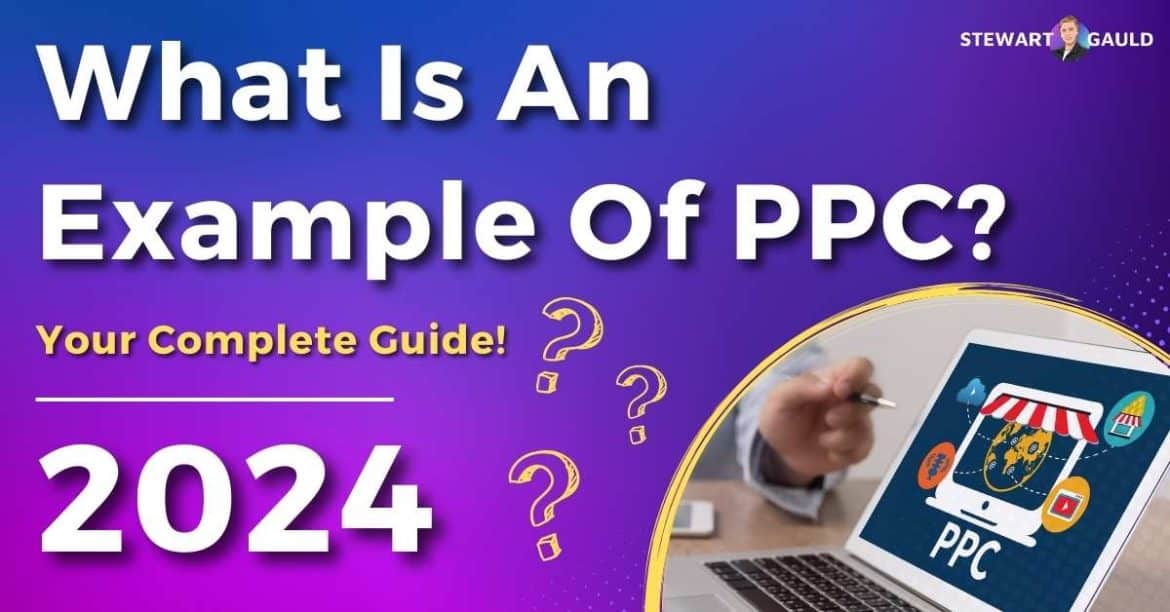In this blog post, I’ll uncover the mystery you’ve all been wondering……what is an example of PPC?
Around 45% of businesses (2024) leverage PPC advertising to help them gain more customers and sales.
So clearly, there’s a reason why so many companies are using PPC within their digital marketing strategies.
But what exactly is it, what is an example of PPC, and what are the benefits of PPC advertising for small business owners?
Read more: How Does PPC Advertising Work?
Quick Summary
- PPC is a quick, low-cost digital marketing strategy consisting of businesses placing ads on search engines, marketplaces, and social media channels.
- With PPC, you’ll only pay when someone clicks on your ad.
- Some examples of PPC include search, display, shopping, video, social media, and Amazon ads. All ad types have a different purpose and target audience.
What is PPC?
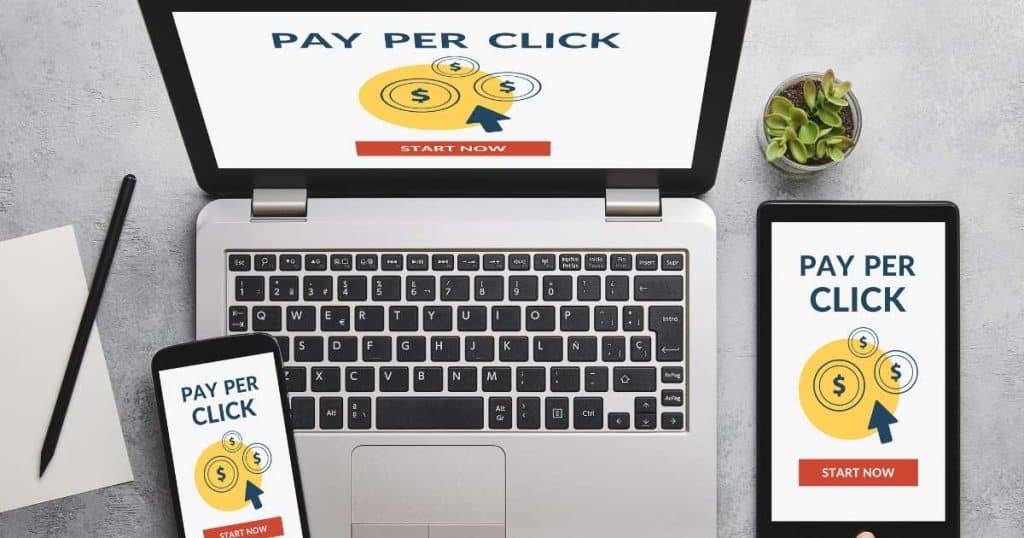
PPC advertising is an effective and measurable digital marketing strategy that involves business owners running ads on search engines or marketplaces.
Basically, you bid on specific keywords relevant to your target audience, and when someone searches for those keywords, your ad may appear to users.
The best part is that you’ll only pay a fee when someone clicks your ad, meaning there is absolutely nothing to lose!
PPC campaigns are commonly found on search engines, social media platforms, and websites and effectively drive targeted traffic and generate leads.
Read more: Which Is Better PPC or CPC?
Search PPC Ads:
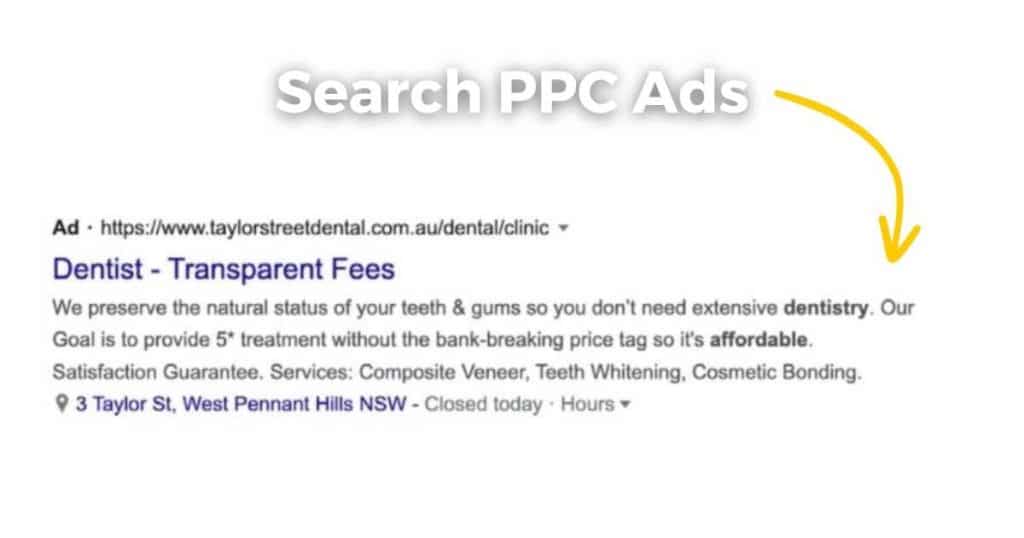
You’ve most likely noticed these ads before (commonly seen at the top or bottom of a Google search page with ‘Ad’ next to them).
When starting with PPC advertising, most advertisers opt for search ads as they’re the easiest to experiment with!
To create a search ad, you’ll need to:
- Select the relevant keywords for your ad.
- Specify the ad copy displayed when a user searches for that keyword.
- Pick the maximum amount you will pay if someone clicks on your ad.
The ordering and pricing of ads are determined by an auction system, which considers how much the advertiser bids on the targeted keyword (and other keyword quality factors).
To enhance these ads, you can add deals, links to direct traffic to specific web pages, or a call extension to encourage phone calls to your business.
The most profitable way to run search-based PPC ads is through Google Ads.
This is because Google is the largest search engine, dominating over 91% of the search market (February 2024).
However, you can run these ads on the Microsoft equivalent (Microsoft Advertising) to run your ads on Bing.
Read more: How To Use Google Ads?
Display (Responsive) PPC Ads:
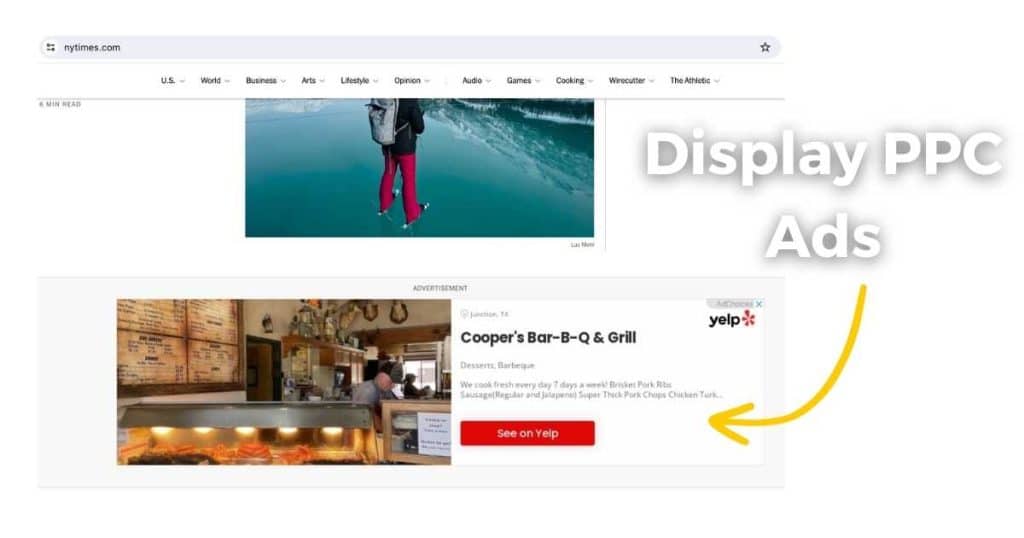
Display ads can be placed on any website within Google’s Display Network and can be adjusted in size, format, and copy to fit the website where they’re displayed.
By providing different options for headlines, copy, and images, Google will create the most effective combination based on the website from its Google Display Network.
Why use display ads? Well, display advertising allows advertisers to showcase their ads to users who have already displayed an interest in their product or service.
Due to the nature of targeting already interested users, display advertising typically has a lower conversion rate than PPC search advertising.
However, one advantage of display advertising is that it often comes with lower click prices than PPC search advertising.
The primary goal of display advertising is to increase your brand awareness.
So, if you have a product or service that is relatively unknown and you want to enhance its visibility, display advertising could be the best option for you!
Read more: What Is A Good CTR For Google Ads?
Shopping PPC Ads:
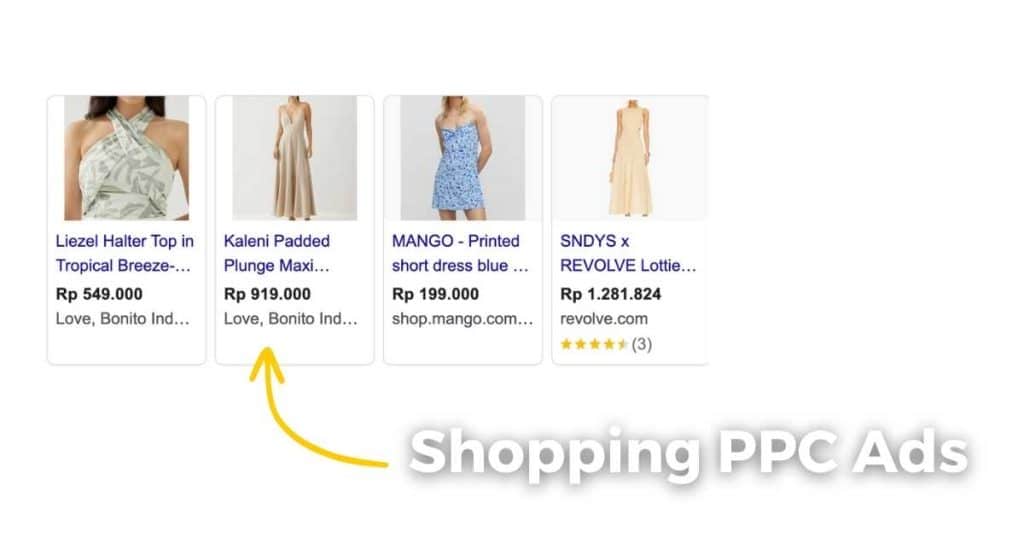
Listen up, all eCommerce advertisers! Shopping PPC ads showcase your products and are usually found within traditional search results and the dedicated ‘Google Shopping’ tab.
These ads include essential product details such as the price, photo, rating, and shipping information.
Shopping PPC campaigns can be incredibly valuable, yielding significant profitability and conversion rates.
This is because users are already presented with a visual representation of the product and its price.
With this prior knowledge, people are instantly more informed about your product before clicking on the ad (and, therefore, more likely to click on it).
As a result, a well-executed Shopping campaign can be a lucrative investment for online businesses!
Read more: How Much Is SEO For Small Business?
Video PPC Ads:
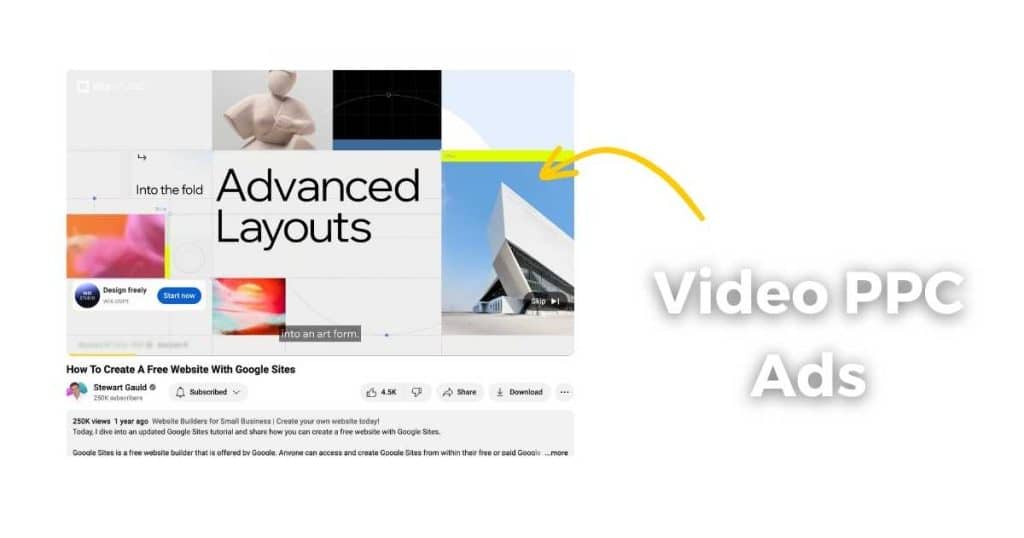
Finally, video ads can be placed and viewed on YouTube.
These ads appear at the beginning, middle, or end of a video (and can be either skippable or non-skippable).
A huge benefit of video ads is that you can place ads in front of people who have no idea you even exist! In other words, you don’t have to put in any work to build an audience!
YouTube is the second largest search engine (after Google). Therefore, video ads are a great way to engage a large audience through video content.
Read more: Keywords Everywhere Alternatives.
Social Media PPC Ads:
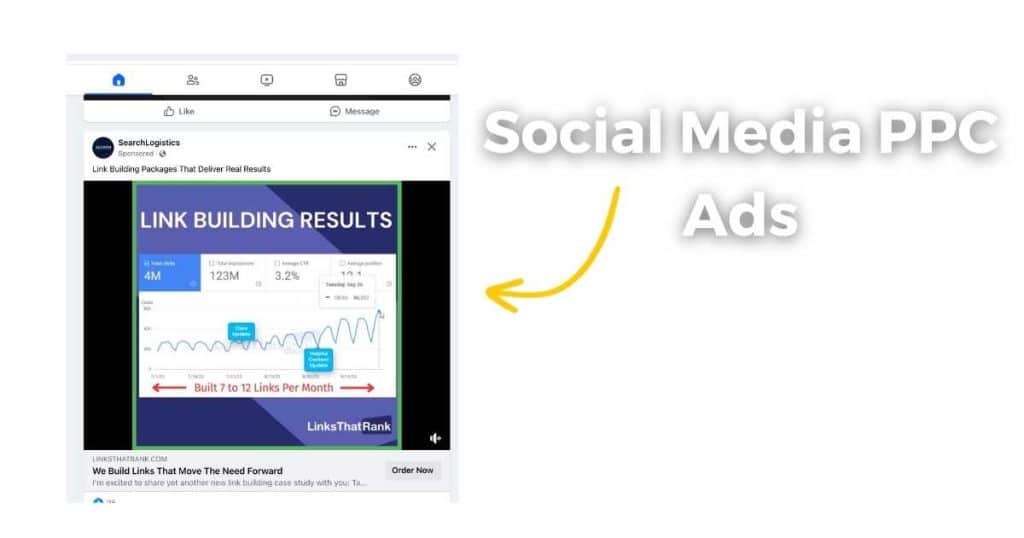
Paid social advertising is a powerful way to reach users while they’re browsing social media platforms such as Facebook, Instagram, Twitter, LinkedIn, Snapchat, and TikTok.
For advertisers interested in running Instagram PPC campaigns, the process is made convenient through the Facebook PPC advertising section.
Since Facebook owns Instagram, you can easily expand your advertising reach by seamlessly adding Instagram to your overall advertising campaign strategy on Facebook.
And the best part is that social media channels provide ample opportunities to create various PPC advertising campaigns!
You can set up:
- Remarketing campaigns that target users who have already engaged with your
- Prospecting campaigns aimed at reaching new potential customers.
These PPC ads offer a wide range of ad formats and sizes, giving you the flexibility to create video ads, image ads, or a combination of both!
Read more: What Is Facebook Business Suite?
Amazon PPC Ads:

If you run a business on Amazon, standing out from the 2 million+ active users (2024) can be a major hurdle!
Thankfully, Amazon offers a solution with its paid advertising platform, Amazon Advertising.
By utilizing their very own PPC model, you can ensure you have the cutting edge, with your products being placed directly in front of customers actively searching for them.
Amazon Advertising consists of three campaign types that can help boost visibility:
- Sponsored Product Ads: These ads appear within the search results when a relevant keyword is searched for.
- Headline Search Ads: These are positioned at the top of the page and are triggered when a specific keyword is searched for.
- Product Display Ads: Similar to a Shopping PPC ad, these ads feature eye-catching images of your actual products
Read more: Amazon vs Amazon Marketplace.
What Are The Benefits of PPC?
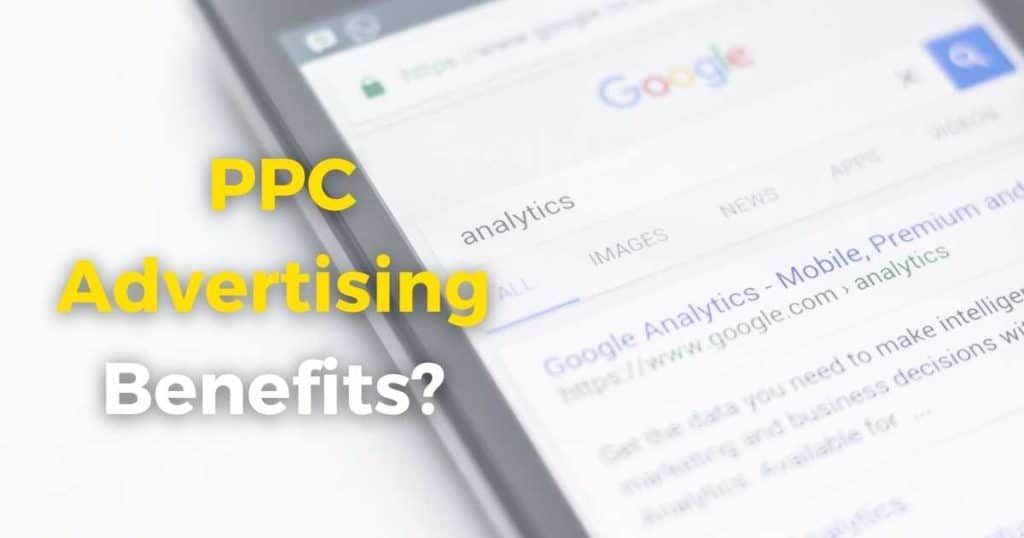
PPC advertising offers several benefits for small businesses looking to enhance their online presence.
Some key advantages include increasing visibility on search engines, generating new website leads, and boosting sales conversions.
With PPC campaigns, you can achieve these outcomes quickly (without exceeding your advertising budget!), making PPC a quick and cost-effective marketing solution.
PPC advertising is also measurable and trackable, allowing you to monitor the performance of your campaigns easily in real time!
Additionally, PPC advertising drives immediate and actionable outcomes.
If you think about it, billions of people search on Google and other search engines daily, right? Therefore, PPC is one of the top sources for on-page conversions!
Stews Final Thoughts
PPC advertising offers many benefits that can elevate your brand’s visibility, drive increased traffic to your website, and deliver measurable results.
By utilizing different types of PPC ads, you can precisely target and zone in on your audience and gather quantifiable data in multiple ways!
PPC is a fast, cost-effective, and measurable way to achieve your marketing objectives – and it works!
I suggest trying out some of the PPC examples above for yourself.
Remember, you only pay when someone clicks on your ad. So, what have you got to lose?
Frequently Asked Questions
Is PPC Only Google Ads?
Google Ads is the most profitable way to run PPC ads, but it isn’t the only way! You can also use other platforms like Bing, Facebook, Amazon, and YouTube to run your PPC campaigns.
What Is Better SEO or PPC?
SEO is an excellent long-term marketing strategy that can help expand your online visibility, while PPC ads excel at driving immediate traffic to your website.
Therefore, I suggest combining these powerful tactics to create a comprehensive online marketing strategy!
By leveraging both SEO and PPC, you’ll capture potential customers at various stages of their purchasing journey and expand your chances of converting your target audience.
Is PPC Marketing Hard?
PPC marketing is easy to learn and implement – if you do it right!
Think carefully about who and what you want to target by meticulously picking your keywords and copy.
Also, it’s worth taking some time to think about your budget and which keywords will generate the most clicks and conversions.
